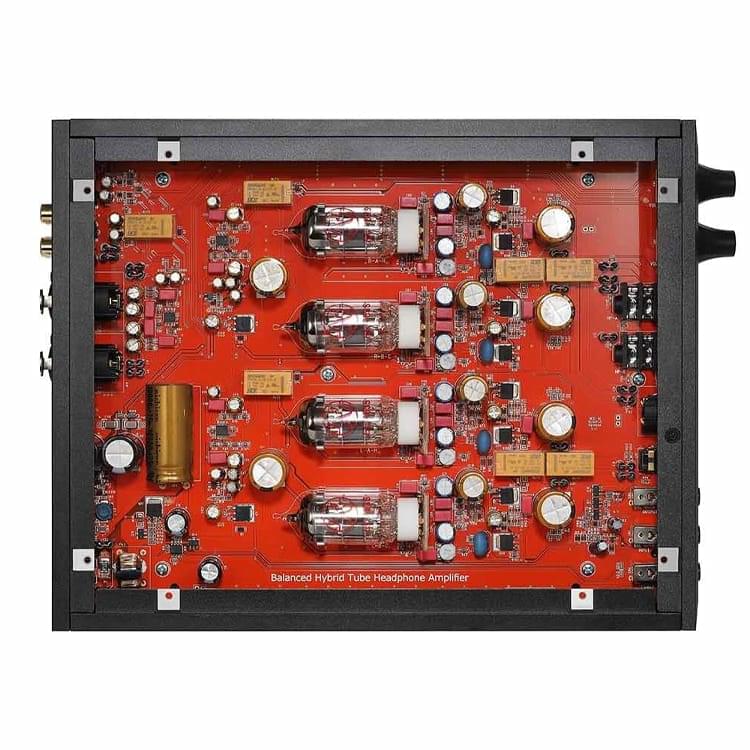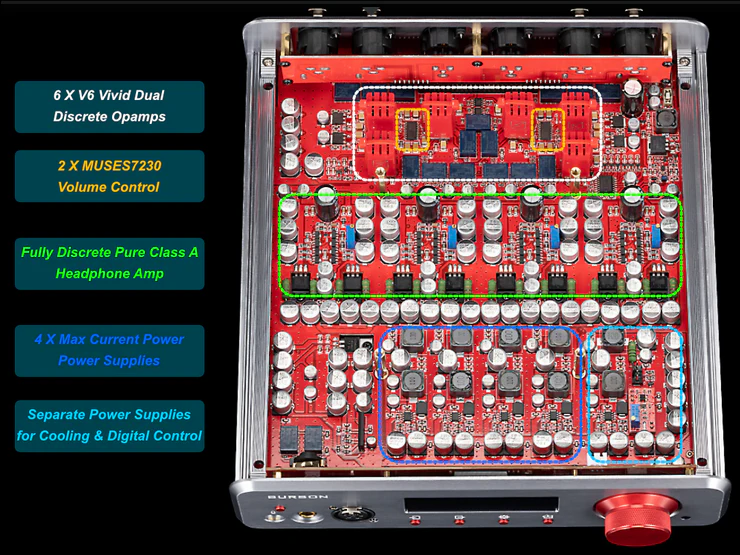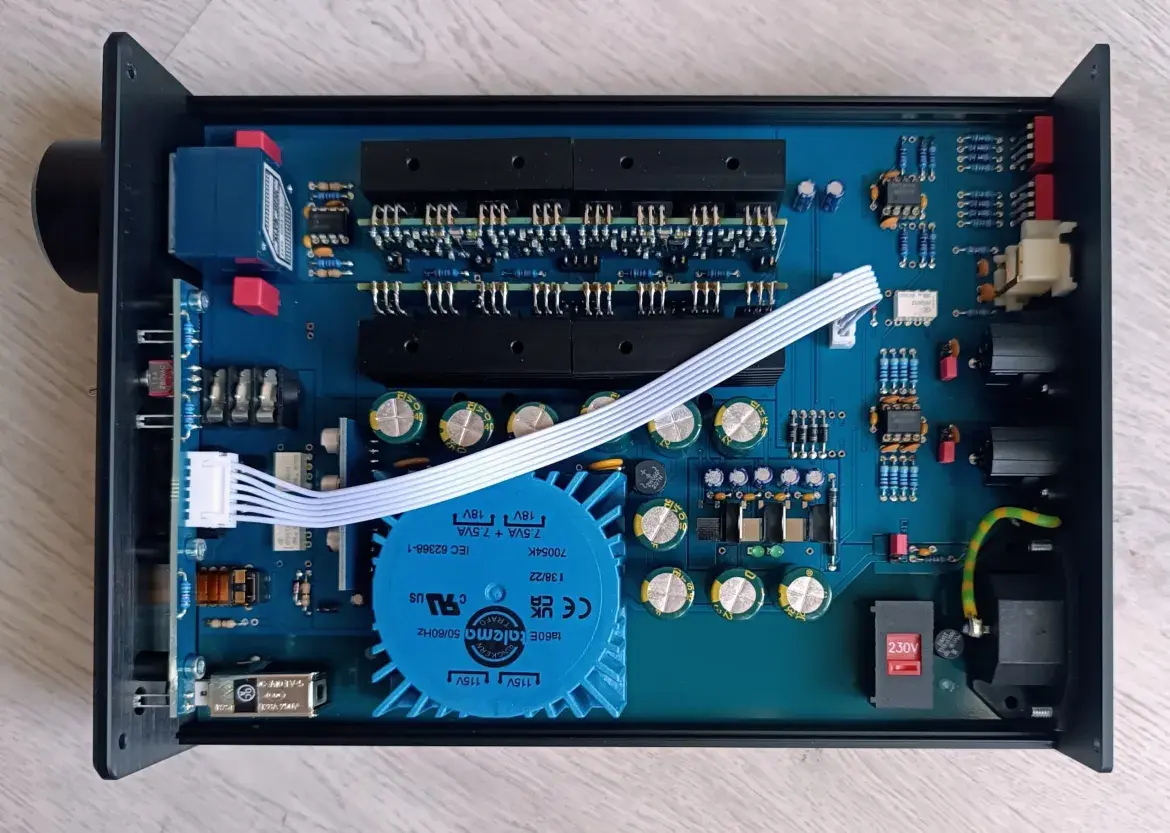 嫌清水嘅話的確dena係有音樂感係度,亦都可以考慮下holo cyan2
嫌清水嘅話的確dena係有音樂感係度,亦都可以考慮下holo cyan2[耳機撚]召集大耳牛、枱式耳機系統用家(96)
我係打手
1001 回覆
5 Like
3 Dislike
denafrips用家在此 嫌清水嘅話的確dena係有音樂感係度,亦都可以考慮下holo cyan2
嫌清水嘅話的確dena係有音樂感係度,亦都可以考慮下holo cyan2
 嫌清水嘅話的確dena係有音樂感係度,亦都可以考慮下holo cyan2
嫌清水嘅話的確dena係有音樂感係度,亦都可以考慮下holo cyan2建議玩膽擴, 唔洗煩balance定single
通常都係得single
通常都係得single

btw有咩條件先算係真balance
其實只有全平衡同非全平衡,相對於單端
全平衡就4個signal 獨立放大
非全平衡就將平衡轉單端放大再轉平衡出
假平衡就直接掉走個-ve signal唔處理,實際係單端
全部要睇電路先知
用返6.3就得
夠推力,單端已經夠,唔洗平衡
[耳機撚]召集大耳牛、枱式耳機系統用家(54)
- 分享自 LIHKG 討論區
https://lih.kg/vPkCaCX
Schiit 大佬Jason 直接建議人唔洗諗balance 唔balance 咁煩
https://www.head-fi.org/threads/schiit-happened-the-story-of-the-worlds-most-improbable-start-up.701900/page-7786#post-17518152

夠推力,單端已經夠,唔洗平衡
[耳機撚]召集大耳牛、枱式耳機系統用家(54)
- 分享自 LIHKG 討論區
https://lih.kg/vPkCaCX
Schiit 大佬Jason 直接建議人唔洗諗balance 唔balance 咁煩

https://www.head-fi.org/threads/schiit-happened-the-story-of-the-worlds-most-improbable-start-up.701900/page-7786#post-17518152
“But I just can’t let go,” someone says. “How do I choose balanced or single-ended? Come on, there has to be more than one step of ‘just say **** it!’”
Okay. Fine. Let’s go a bit deeper. But again, these are not rules. Feel free to experiment. You’re not going to be graded on this.
Go for balanced if:
You need the noise rejection for long cable runs. Trying to run RCAs 25 or 50 or 100 feet? Yeah, maybe you really need to go XLR balanced. Real balanced.
You’re going to be working with a lot of pro gear in the mix. Pro stuff is usually XLR balanced. Best to keep it there if that’s what you’re working with.
If you know what kind of balanced it is, how it works together, and you like the way it sounds.
Stay away from balanced if:
You want least cost for quality. SE does have an advantage in simplicity, so if you’re going for simple, and you want high quality, you have a better shot of getting it from SE.
You want pretty much universal compatibility with consumer audio gear. Let’s face it, pretty much everything can accept RCA inputs. Balanced-only gear is scarce in the consumer audio space.
You want it small. Connectors and circuitry can both be smaller on the SE side, so if you’re looking for small, you’re also probably looking at SE.
想問2541同chord可以喺邊度試?
2541好似得現時點CAS workshop有?
2541好似得現時點CAS workshop有?
Audio stage都有


如果睇product description夠唔夠
好似v222同soloist 3x gt都話自己係全平衡
不過唔排除有啲可能係fake嘅
另外如果喺全平衡amp用單端輸出
個做法會係平衡放大完再轉返做單端?

好似v222同soloist 3x gt都話自己係全平衡
不過唔排除有啲可能係fake嘅
另外如果喺全平衡amp用單端輸出
個做法會係平衡放大完再轉返做單端?
有冇用過enyo呢款?好似之前叫ares 2
Denafrips仲有幾款12/15th 產品名有啲亂
Denafrips仲有幾款12/15th 產品名有啲亂

搵日上去Audio Stage望下先
唔該巴打
唔該巴打

ic
不過純粹從來都冇玩過平衡
覺得接觸下都係必須嘅
所以plan定下一部amp就算唔用都好
都一定要有平衡頭
第日有性趣想玩都唔需要又再換機

不過純粹從來都冇玩過平衡
覺得接觸下都係必須嘅
所以plan定下一部amp就算唔用都好
都一定要有平衡頭
第日有性趣想玩都唔需要又再換機
如果睇product description夠唔夠
睇你信唔信
睇開蓋相都係一個方法,最少知係唔係假平衡先
係唔係全平衡都未必知
4個signal, 你應該會見到4堆一樣零件係phone out 插座附返或者用線連住個插座,通常都係整齊咁排嘅
另外如果喺全平衡amp用單端輸出
個做法會係平衡放大完再轉返做單端?
呢個情況我比喻為一盒蛋糕有4件餅,你要兩件之後就掉咗唔食個d,並唔會將兩件餅夾埋一件先食

Hugo2 8樓有,let go可能有,可以問問,2541 就audio stage 有

我用chord假平衡XLR入v550,但9成都係single end 聽 啱聽就得,唔使咁執著true 唔true、balance唔balance。我通常都係賴得校gain(個gain響後邊好唔方便),就難推機用balance, 易推嘅用single end算數
啱聽就得,唔使咁執著true 唔true、balance唔balance。我通常都係賴得校gain(個gain響後邊好唔方便),就難推機用balance, 易推嘅用single end算數
建議你買機有齊真平衡、6.35、4.4、4pin XLR就方便啲,當然如果你深入到研究埋電路設計,咁你要另請高明
 啱聽就得,唔使咁執著true 唔true、balance唔balance。我通常都係賴得校gain(個gain響後邊好唔方便),就難推機用balance, 易推嘅用single end算數
啱聽就得,唔使咁執著true 唔true、balance唔balance。我通常都係賴得校gain(個gain響後邊好唔方便),就難推機用balance, 易推嘅用single end算數
建議你買機有齊真平衡、6.35、4.4、4pin XLR就方便啲,當然如果你深入到研究埋電路設計,咁你要另請高明


好想快d星期六
我想rip碟同聽歌
上星期淺試wavelight 出oor
好好聽
聲場立體又大
細節自然呈現,我就算用黑杮都唔會太過中性,有d微暖又analog感
好正
要試下用部膽amp出嚟咩聲

我想rip碟同聽歌

上星期淺試wavelight 出oor
好好聽

聲場立體又大
細節自然呈現,我就算用黑杮都唔會太過中性,有d微暖又analog感

好正

要試下用部膽amp出嚟咩聲

用緊ares ii,覺得呢個價位都幾無敵,再貴啲就唔肯定,我最近升咗headphone amp所以搵緊有咩dac一萬左右好
12同15th係會令人混亂,但舉個例子其實只係pontus 3同pontus 4,未出12之前有pontus ii

12同15th係會令人混亂,但舉個例子其實只係pontus 3同pontus 4,未出12之前有pontus ii





好似bha100咁就真係有四set嘢一模一樣

burson中間都有

但v222唔多覺有咩係四set嘢一模一樣


burson中間都有

但v222唔多覺有咩係四set嘢一模一樣


thx bro sharing


